With state-of-the-art technology, a collaboration with IIT Bombay and an outreach programme targetted at aspiring conservators, the refurbished Art Conservation Research Centre at this Mumbai museum augurs well for the cultural heritage restoration movement in India
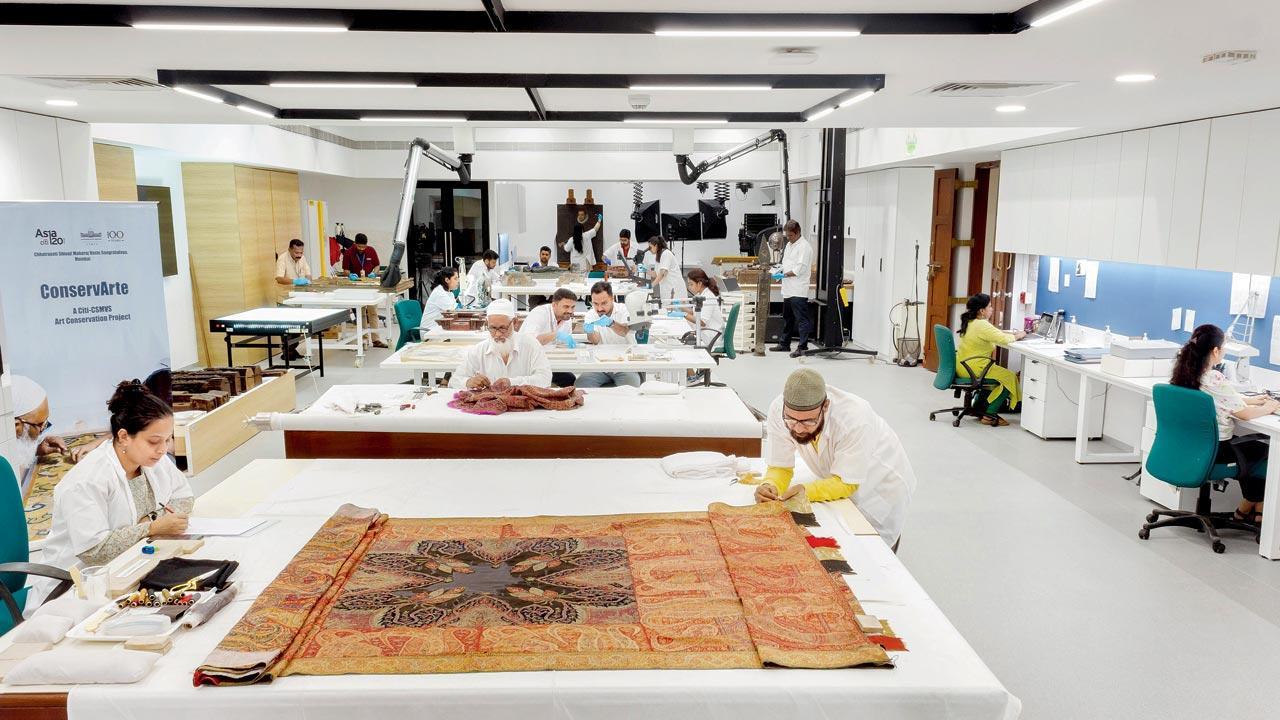
The staff inside the newly refurbished CSMVS Museum Art Conservation Centre. Pics Courtesy/CSMVS
It is serendipitous that in its 101st year, the Chhatrapati Shivaji Vastu Sangrahalaya (CSMVS; formerly Prince of Wales Museum) boasts of a refurbished art conservation centre, underling the belief that preservation is as integral a cog as acquisition for a museum to exist and thrive. The upgraded Citi-CSMVS Conservation and Research Centre located in the eastern wing of the building is 4,000 sq-ft large and brightly lit. “Welcome to our new home,” smiles Nikhil Ramesh, in-charge curator, Conservation Section. It’s tough to miss a panel of touch screens in the corridor, which we learn will be at the centre of the interactive section where visitors can watch the department at work. “We want visitors to realise that conservation can be a career path. It’s nascent in India, and this centre can become a hub to encourage its popularity among talent across faculties.”
ADVERTISEMENT
The main hub resembles a worker-bee colony; lab-coated conservators and restorers, and master rafoogars or darners are busy, reviving antique objects, artworks and textiles, each piece holding a fascinating backstory.
“The Art Conservation Research Centre at CSMVS has always been considered as a multi-speciality hospital for antiquities and art objects. It’s highly specialised area which needs unique equipment and the involvement of trained experts. The decision to refurbish it was taken after consulting internationally acclaimed conservation experts,” shares the Director General of the museum, Sabyasachi Mukherjee, adding that the centre not only offers its services to the museum’s 70,000-plus antiquities and art objects, and extends its expertise to private collectors and cultural institutions, too. Mukherjee contextualises its relevance when he says that indifference, ignorance and the non-availability of experts, conservation facilities, funds, and above all, the paucity of accessible knowledge about the latest techniques of preventive and curative conservation, have impacted India’s cultural heritage. “A centre like this enables our museum staff to study the environmental effects on different materials at various stages in their life, which is critical and necessary.”
Ramesh’s wish for the future is clear and simple: Increasing collaborations with universities and scientific laboratories to empower young people into this profession.
Mid-day brings you an exclusive glimpse into all that’s modern at this spanking new conservation centre.
Interpretation centre, training and workshop area
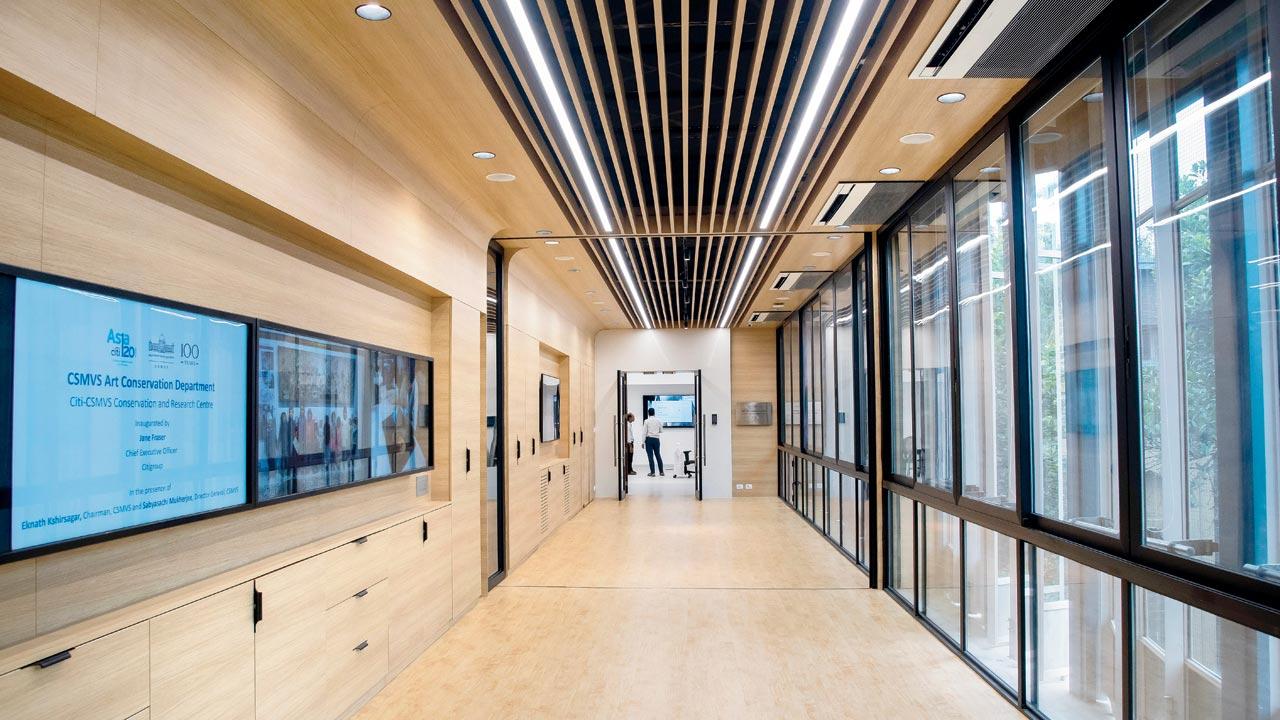
Set in a bright vestibular corridor, the proposed interpretation centre’s chief role is to generate awareness about conservation and engage with the general public that visits the museum. The section will offer digital interpretation of the department’s work via a panel of touch screen televisions. This ongoing project is being developed along with IIT Bombay. The first phase is scheduled to launch by the end of this financial year and involves the creation of a database that will link it to a user interface. Information, ranging from images to processes, that are logged in by the conservation team will be transferred here. This then will be recorded and relayed to the end user in the form of engaging, precise video capsules.
With the museum’s growing itinerary, this area will also double up as a convenient venue for workshops, training programmes and seminars.
X-Ray Fluorescence (XRF) device
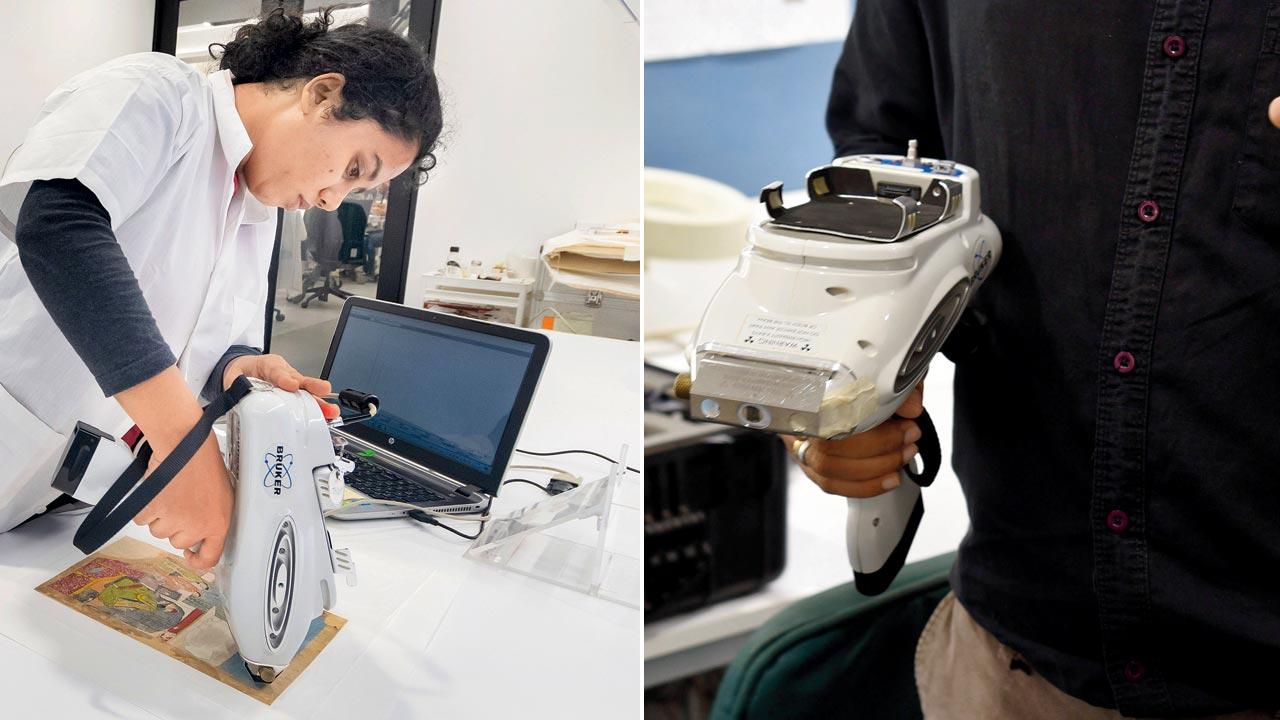
It’s used to help determine the elemental composition of objects. Held like a gun, it is pointed towards the object as it bombards the surface with X-rays. The surface interacts with the X-rays and relays signatures about the relevant material, thus guiding the team to corroborate its origins (For example, if it is gold and not fool’s gold/bronze, or a similar looking metal like copper). This device is vital to help make informed decisions on how to treat the surface or object with the correct approach. XRF is sourced from the metal industry where it is used extensively in scrapyards to determine the nature of metals and minerals onsite. Another acquisition is the Laser machine that uses laser light to clean object surfaces. No human intervention is needed to handle the object. The department now has an incubator-like enclosure that stores this sensitive equipment.
Electric easel
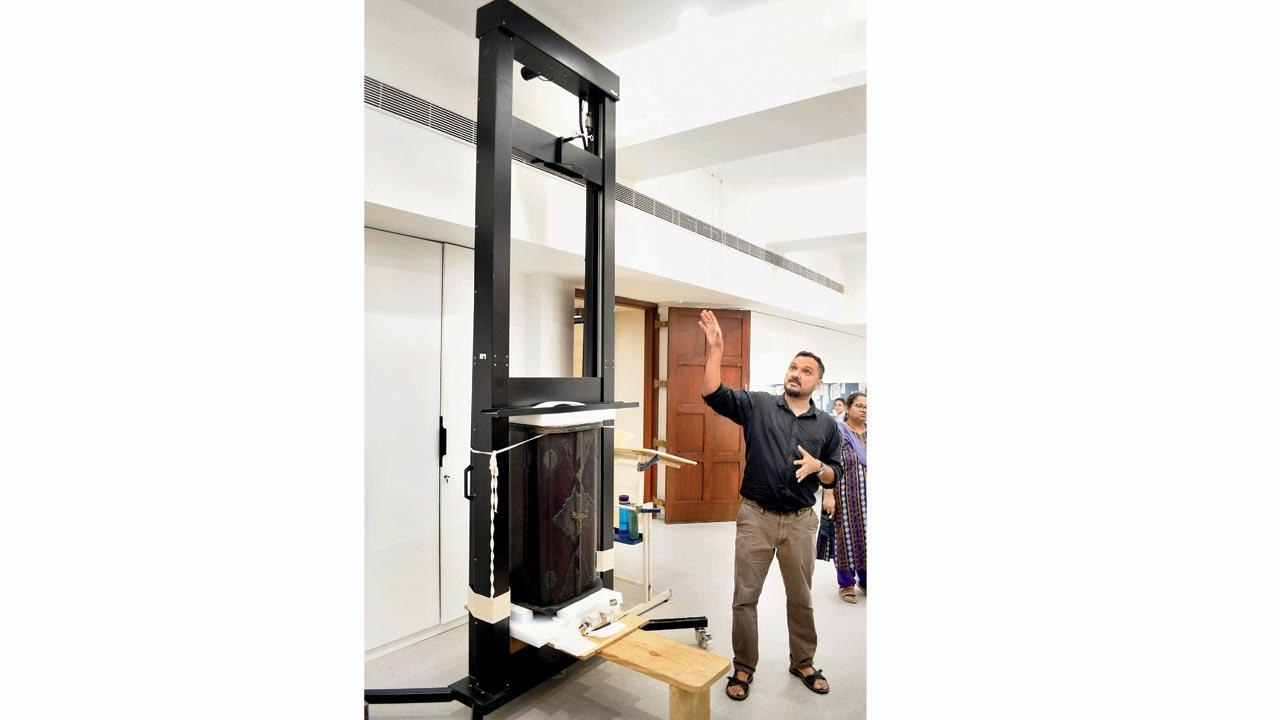 Nikhil Ramesh explains the unique features of the recently-installed electric easel. Pics/Sameer Markande
Nikhil Ramesh explains the unique features of the recently-installed electric easel. Pics/Sameer Markande
It looks similar to an artist’s easel. This movable piece of equipment forms part of the oil painting section, and is motorised to accommodate differently-sized paintings. It is particularly useful to restore oversized paintings because it minimises the need to handle or manoeuvre the artwork, making it convenient and comfortable for the restorer to focus on the task at hand.
Fume extraction system
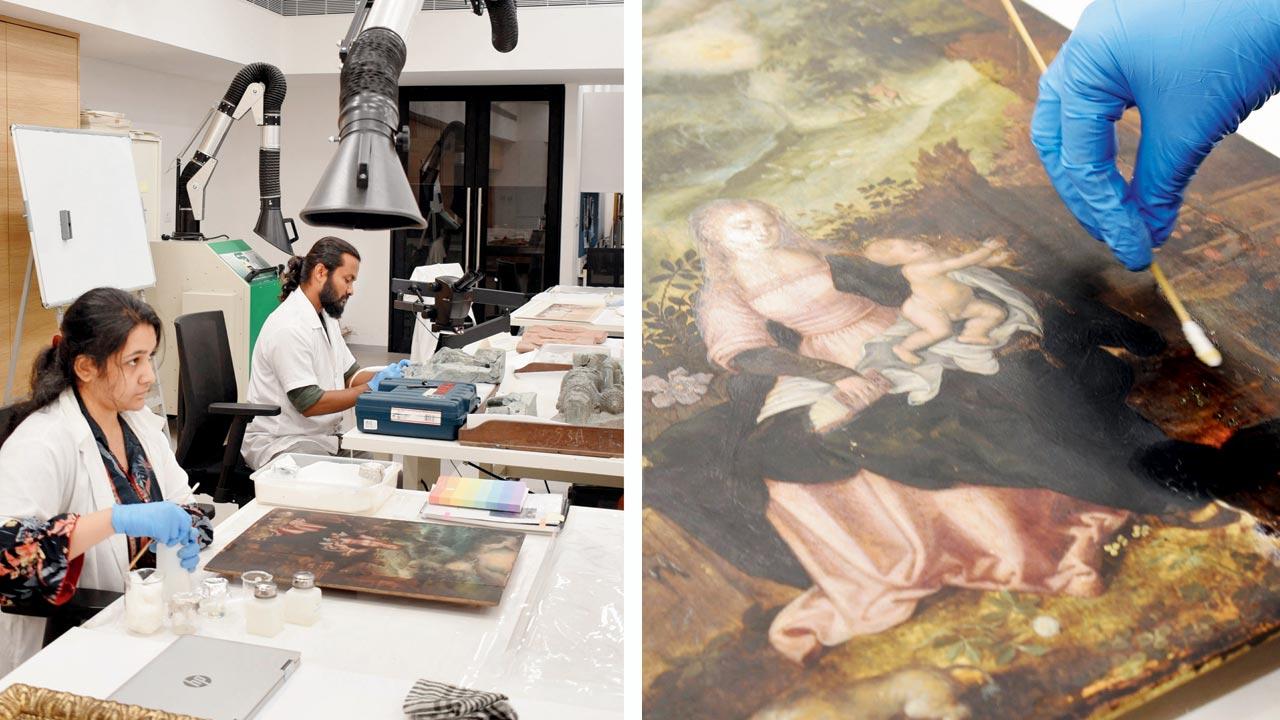 Staff working in the comfort of the fume extraction system; (left) A close-up of a Dutch oil painting from the 18th century being restored. Such paintings require relatively lesser toxic chemicals to break the surface down, in order to understand its age and damage before picking the correct preservation technique. This painting is from the Baltic region, and has Baltic oak as its base. Typically, it takes three to four months to restore an artwork such as this one
Staff working in the comfort of the fume extraction system; (left) A close-up of a Dutch oil painting from the 18th century being restored. Such paintings require relatively lesser toxic chemicals to break the surface down, in order to understand its age and damage before picking the correct preservation technique. This painting is from the Baltic region, and has Baltic oak as its base. Typically, it takes three to four months to restore an artwork such as this one
The department works with a lot of chemicals where the air can get toxic, and so conservators wear gas masks for their safety. But the others around them aren’t always masked. Earlier, the centre had a portable device that moved on wheels towards the object that had to be restored. It included a huge exhaust pipe that used to be lugged along, plus an outlet was needed to release the fumes; overall, it was a cumbersome process. Keeping the primary concern of safety in mind, in the refurbished space, all chemical work was isolated in one section. With the turn of a switch, suspended chemicals are immediately sucked into the pipe. This integrated system in a modular area is useful to those who work closely with such chemicals without affecting the rest of the staff who are mask-less. Its usage is typically confined to the section that restores oil paintings because solvents are used to treat artworks in order to determine their age and preserve their longevity.
Digital documentation section
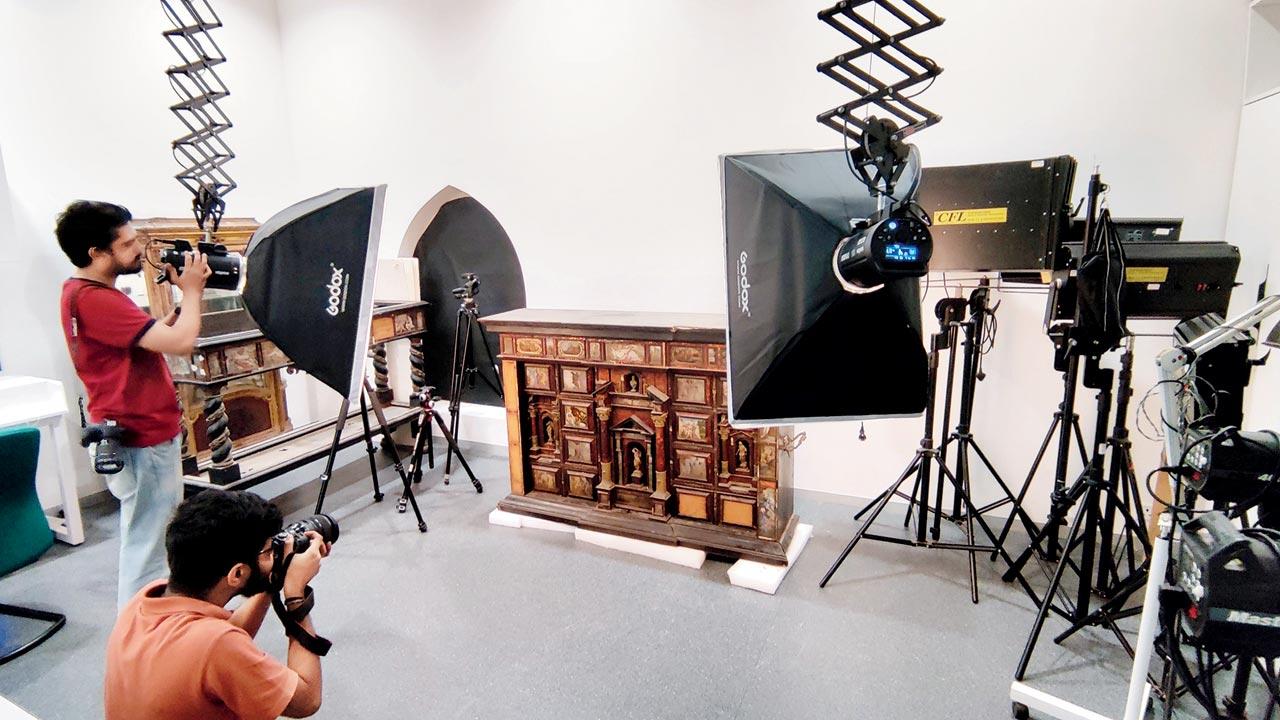
Imaging using UV light facilitates the study of missing and minute details on artefacts, the presence of layers as well as timelines of objects or paintings. This is the backbone of the conservation process and helps the team base their decisions after seeing these findings. Previously, the department faced a challenge when it came to imaging larger objects, especially textiles. Plus, UV light posed a health hazard for staff. This new space can be isolated, thanks to a sliding partition, and necessary precautions can be taken. All equipment in this section is also movable.
Remote monitoring system
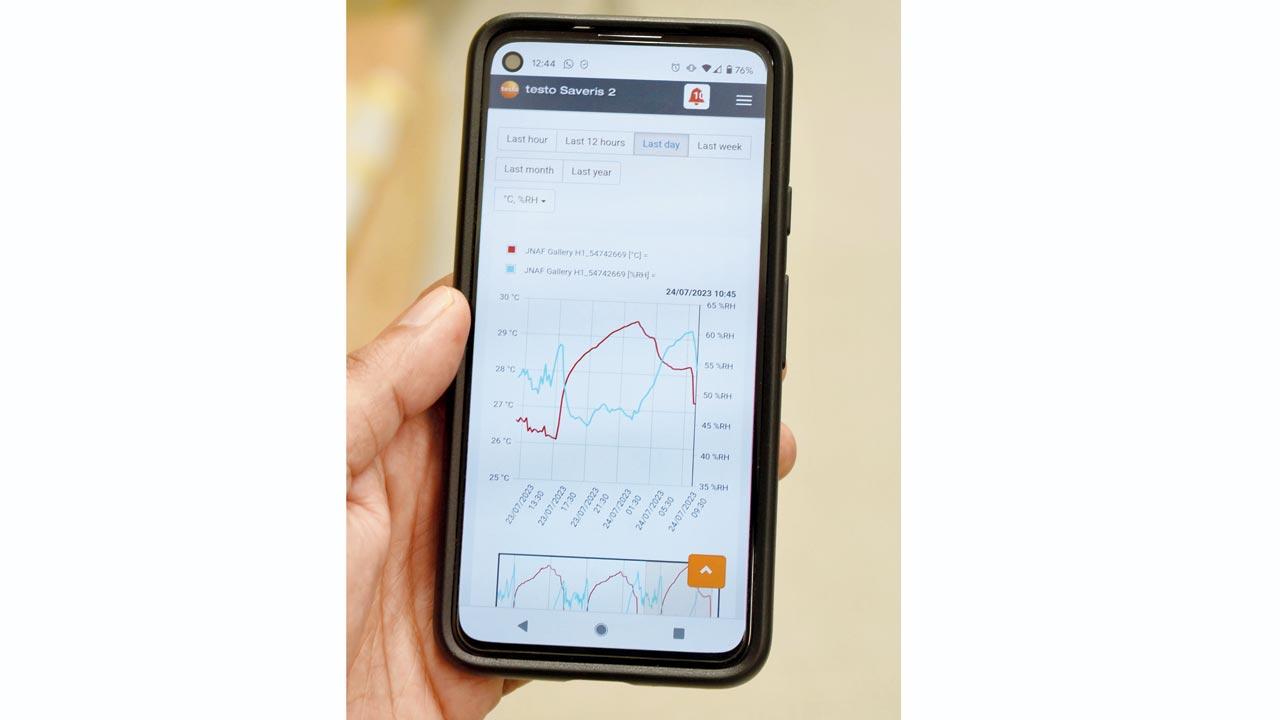 Loggers installed within the galleries help monitor and analyse the relative humidity levels within the space
Loggers installed within the galleries help monitor and analyse the relative humidity levels within the space
The lockdown threw up a host of challenges, including the monitoring of exhibits and maintaining the environment within the galleries. With the help of technology, a solution was arrived at in 2022 where Wi-Fi data loggers were installed in various sections. These monitor the temperature and relative humidity within and transfer the data on to the cloud, making it possible for the conservation staff to access the data remotely. It also helps monitor Co2 levels. If huge crowds assemble in the museum, an alarm goes off.
Did you know?
Restored objects and artworks that come out of the conservation centre undergo a period of acclimatisation before they go on display across various galleries. During this interim phase, they are stored in a temperature-controlled space that is a gradual change from the conditions inside the conservation centre. This period usually lasts for a month.
 Subscribe today by clicking the link and stay updated with the latest news!" Click here!
Subscribe today by clicking the link and stay updated with the latest news!" Click here!







